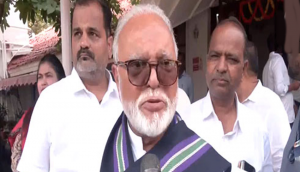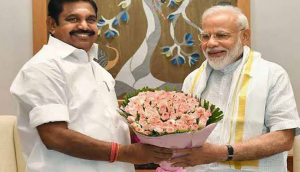Vyapam scam: RSS retires key man Suresh Soni, shows BJP the way

The action
- The BJP hasn\'t taken any action against any of its leaders facing corruption charges
- But the RSS has decided to send its joint general secretary Suresh Soni into forced retirement
- Madhya Pradesh has been rocked by the \'Vyapam scam\', which involved candidates getting through medical exams through cheating
- Soni allegedly got an RSS man selected through Vyapam by writing a letter to the MP education minister
- He will continue in his position but his responsibilities have been given to another RSS functionary Krishna Gopal
The background
- Soni has been one of Narendra Modi\'s strongest backers in RSS
- He also represents the rise of Baniyas within the Sangh
- His sidelining could be a reaction to the increasing clout of Baniyas in the Brahmin dominated organisation
The BJP might have decided to brazen out the Vyapam controversy but the Rashtriya Swayamsevak Sangh (RSS) has quietly taken action against one of its senior most functionaries: Suresh Soni.
Soni, who is a Sah Sarkaryavah (Joint General Secretary) in the RSS, had allegedly helped a person secure a job through Vyapam. Sources suggest that the RSS has taken a very strict view of the matter and has asked Soni to go on vanvaas - forced retirement.
Soni will still be holding his position as Sah Sakaryavah, but he would not be performing any functions. Krishna Gopal, who holds the same position, will now take over Soni's responsibilities.
The RSS is expected to announce Soni's formal retirement during it's national meet - the Akhil Bharatiya Pratinidhi Sabha - around March next year.
Ill health or Vyapam?
Sources say that Soni had anticipated action against him and written a letter to RSS chief Mohan Bhagwat, requesting early retirement citing health problems.
In June this year, Soni suffered a heart attack when he was attending a RSS camp in Kanpur. He had to be air-lifted to Delhi for treatment. But he had a speedy recovery and got back to work without much difficulty.
But RSS insiders reveal that the reason for Soni's retirement isn't ill health, but Vyapam.
Soni allegedly wrote a letter to Madhya Pradesh higher education minister Laxmikant Sharma, pushing for an RSS man to be selected for a government job through Vyapam.
Of course, Soni's alleged involvement is much less grievous compared to the charges against Madhya Pradesh chief minister Shivraj Singh Chouhan. But RSS insists that the moral yardstick for its functionaries is much higher and it sees Soni's alleged misdemeanour as unacceptable.
Soni was instrumental in making Modi BJP's PM candidate. He backed the Modi-Shah duo's takeover of the party
When the buzz around the Vyapam scam intensified last year, Soni's alleged connection became a source of great embarrassment for the RSS. The organisation began sidelining him back then. One of Soni's major responsibilities was to act as a point of liaison with the BJP. The RSS reassigned this job to Krishna Gopal as soon as it realised that the Vyapam trail would land at it its doorstep because of Soni.
It must be remembered that Soni played an extremely crucial role in Narendra Modi's selection as the BJP's prime ministerial candidate. He is also said to have helped Modi and BJP president Amit Shah assume near total control over the BJP.
Soni's forced retirement may mark a significant change in power equations within the Sangh. This will have its ramifications on the BJP as well.
Brahmin versus Baniya divide
Apparently, the decision to send Soni on vanvaas was taken during the three day meet of RSS leaders in Nainital, that ended on 24 July. More than 150 RSS functionaries - including 42 prant pracharaks and 11 kshetra pracharaks - were present in the meeting.
In the concluding remarks, Mohan Bhagwat appreciated the rising social acceptability of the RSS and said that more should be done to take it forward.
But the remark now seems ironic with Soni being eased out. Soni represents the rise of the Baniya community within the Brahmin-dominated RSS. He was both a symbol and an agent of the RSS' efforts to create space for other caste groups. Though Baniyas always had good relations with the RSS, it was Soni's efforts that led to many people from the community occupying high positions in the Sangh.
This was even more evident in the BJP. Soni was among the strongest backers of Modi and Shah, both Baniyas. Ram Lal, the general secretary (organisation) in the BJP, is also a Baniya and a known Soni man.
Even among the new office bearers appointed by Shah, Baniyas have a significant representation with individuals like Sunil Bansal, Om Prakash, Rakesh Jain getting important roles.
However, his caste also restricted his growth and occasionally placed him on the wrong side of Bhagwat's decisions. For instance, Soni was against making Nitin Gadkari the BJP president in 2009. But Bhagwat ignored Soni's views decided in Gadkari's favour. Both Bhagwat and Gadkari are Maharashtrian Brahmins, a community that has dominated the RSS since its inception.
The RSS top brass isn't comfortable with the recent rise of Baniyas in the BJP. Soni's vanvaas can partly be seen as the result of a Brahminical reassertion. The question is: will he be the only victim?
First published: 27 July 2015, 11:16 IST






![BJP's Kapil Mishra recreates Shankar Mahadevan’s ‘Breathless’ song to highlight Delhi pollution [WATCH] BJP's Kapil Mishra recreates Shankar Mahadevan’s ‘Breathless’ song to highlight Delhi pollution [WATCH]](https://images.catchnews.com/upload/2022/11/03/kapil-mishra_240884_300x172.png)

![Anupam Kher shares pictures of his toned body on 67th birthday [MUST SEE] Anupam Kher shares pictures of his toned body on 67th birthday [MUST SEE]](https://images.catchnews.com/upload/2022/03/07/Anupam_kher_231145_300x172.jpg)






